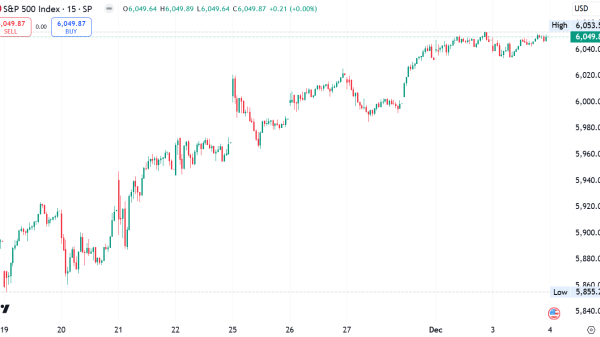How to Calculate APY in Crypto?
In crypto, APY, or Annual Percentage Yield, is a crucial metric in the world of cryptocurrency. Without a doubt, it plays an important role in various decentralized finance (DeFi) protocols, yield farming strategies, staking mechanisms, and liquidity provision. The question is, ‘How to calculate APY in crypto?’
How to calculate APY?
A particular formula is used to calculate the APY. This formula is commonly applied in financing when the nominal interest rate remains relatively constant. Nevertheless, the nominal interest rate and the number of compounding periods are involved in calculating the APY.
Nominal interest rate: It is the interest rate before considering inflation.
Compounding period: The compounding period is the period between the prior interest being compounded and the next time it will be compounded. Annual compounding indicates the interest which is compounded every year. What’s important, it can be done monthly, daily, or at any other period.
APY is calculated using this formula:
APY = ( 1 + (r / n))n – 1
Where:
APY = annual percentage yield
r = nominal interest rate
n = number of compounding periods
Now, let’s get to the main question, ‘How to calculate APY in crypto?’
In crypto, APY operates differently from traditional banking. Instead of calculating interest rates based on the dollar value of assets, customers earn interest denominated in the cryptocurrency they’ve invested. From time to time, interest may be paid in a different cryptocurrency, but this is rare.
Definition and significance of APY
APY represents the effective annual interest rate earned on an investment, considering the impact of compounding over a year. As a reminder, it is a critical metric because it helps investors evaluate the potential returns on their crypto assets over time. Unlike simple interest rates, which only consider the base rate without compounding, APY provides a more accurate picture of the growth of an investment.
Applications of APY in Crypto
In the realm of crypto investments, generating a passive income regularly often involves engaging in yield farming. Yield farming is the strategic utilization of one’s crypto assets to earn additional coins. It encompasses various methods of profit generation, including:
Staking: This entails earning cryptocurrency rewards by validating transactions on a blockchain network. Users participate in proof-of-stake networks, pooling their currencies to increase the likelihood of being selected as a validator. Validators are responsible for adding blocks to the blockchain, and their rewards are proportional to the amount of currency they commit to the network.
Providing liquidity: This involves supplying two cryptocurrencies of equal value to a decentralized exchange automated market maker, facilitating transactions. By providing liquidity, individuals can earn a competitive APY and capitalize on the accumulated fees from transactions.
Providing liquidity to decentralized exchanges (DEXs) involves depositing assets into liquidity pools to facilitate trading. Users earn rewards in the form of trading fees and sometimes additional tokens issued by the protocol. APY is used to calculate the annualized return on the liquidity provided, factoring in both the trading fees and any additional rewards earned through the protocol.
Crypto lending: Engaging in direct or distributed decentralized lending allows users to earn interest as profits. By providing loans, either directly or through decentralized platforms, individuals can generate income in the form of interest payments.
Factors affecting crypto APY
We need to note that market dynamics, including supply and demand for specific tokens, trading volumes on decentralized exchanges, and overall market sentiment influence crypto APY. Bullish trends may lead to higher APYs as demand for yield-generating strategies increases.
Protocol parameters: DeFi protocols often have configurable parameters, such as token emission rates, liquidity incentives, and staking rewards. Changes in these parameters can impact APY, with higher rewards attracting more participants and potentially driving up APY.
Risk factors: High APYs in crypto often come with higher risks, such as smart contract vulnerabilities, impermanent loss (in liquidity provision), or protocol exploits. Investors should carefully assess the risks associated with each opportunity before committing their funds.
How to minimize the risk?
Let’s not forget that liquidity providers may incur an impermanent loss when the value of the tokens in the liquidity pool diverges significantly. This loss occurs when the value of the tokens held in the pool changes relative to each other, resulting in less favourable exchange rates for liquidity providers.
Smart contract risks: DeFi protocols rely on smart contracts to execute transactions and distribute rewards. Nevertheless, these smart contracts may contain bugs or vulnerabilities that could be exploited by malicious actors, resulting in financial losses for users.
Market volatility: Crypto markets are known for their high volatility, which can impact APY calculations. Sudden price fluctuations in underlying assets can affect the value of rewards earned through yield farming, staking, or liquidity provision.
Strategies for maximizing crypto APY
Diversifying investments across multiple DeFi protocols can help mitigate risks associated with individual projects. By spreading out their funds, investors can reduce their exposure to potential smart contract risks or protocol exploits.
The crypto landscape is constantly evolving, with new protocols, tokens, and opportunities emerging regularly. Staying informed about the latest developments, market trends, and regulatory changes can help investors make informed decisions and adapt their strategies accordingly.
What is the difference between APY and APR?
APY (Annual Percentage Yield) and APR (Annual Percentage Rate) are both important financial metrics used to measure the returns or costs associated with various financial products. However, they serve different purposes and account for different factors, resulting in distinct calculations and implications for consumers.
APY represents the effective annual interest rate earned on an investment, taking into account the effect of compounding over a year. It provides a comprehensive measure of the actual return on an investment, factoring in both the nominal interest rate and the frequency of compounding. APY is commonly used in savings accounts, certificates of deposit (CDs), and investment products to accurately reflect the potential growth of funds over time.
Key features of APY include:
The compounding effect: APY accounts for the compounding of interest, allowing investors to understand how their earnings will accumulate over time.
Accurate representation: By considering compounding, APY provides a more accurate representation of the actual return on investment compared to simple interest rates.
Standardized comparison: APY allows for standardized comparison of different investment products, enabling consumers to evaluate their options more effectively.
What about Annual Percentage Rate (APR)?
APR represents the annualized interest rate charged on loans, credit cards, mortgages, and other borrowing products. Unlike APY, APR does not consider the effect of compounding and reflects only the nominal interest rate charged by the lender. APR is used to assess the cost of borrowing and to compare the relative affordability of different loan products.
Key features of APR include:
No compounding effect: APR does not account for compounding interest, providing a straightforward measure of the annualized interest rate charged by the lender.
Focus on borrowing costs: APR focuses on the cost of borrowing money, making it a crucial metric for consumers evaluating loan options.
Regulatory requirement: APR is often mandated by regulations to ensure transparency and consistency in lending practices, allowing consumers to make informed decisions.
To sum up, APY in crypto plays a crucial role in DeFi protocols, yield farming strategies, staking mechanisms, and liquidity provision. So, it is vital to remember, ‘How to calculate APY in crypto?’
Understanding APY and the factors that influence it is essential for investors seeking to maximize their returns while managing risks in the dynamic and rapidly evolving world of cryptocurrency.
By staying informed, diversifying investments, and implementing risk management strategies, investors can navigate the crypto landscape more effectively and capitalize on opportunities for growth.
The post How to Calculate APY in Crypto? appeared first on FinanceBrokerage.


































